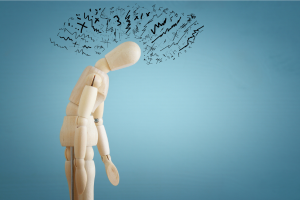Addiction: The Causes of Abuse and Dependence And How to Break the Cycle
I f a woman, a singing sensation, like Amy Winehouse, surrounded by her manager, family, doctors, and bodyguard could be victim to the destruction of addiction… what hope do we have?
f a woman, a singing sensation, like Amy Winehouse, surrounded by her manager, family, doctors, and bodyguard could be victim to the destruction of addiction… what hope do we have?
Writer Sarah Walker describes the wrenching experience of watching a beloved sister deal with a series of drug addictions. Standing by while a friend, a loved one, a celebrity, or anyone succumbs to addiction can fill us with questions, confusion, and a deep desire to help. If the struggle with drug addiction is so often painful and deadly, why does it happen? What can we understand about addiction that can help us make a difference, and go beyond despair and sadness to offer a more healing response?
Fortunately, the understanding around addiction has started to address the role of trauma, emotions, and relationships in a way that is leading to more effective approaches for treatment centers and therapists, and a new mindset for many others who want to help.
With a better understanding of the nature of addiction and looking thoughtfully at what contributes to the formation of addiction, we can respond with more effective attitudes and care. We can help people with addiction and their loved ones find new, positive ways to support the journey to recovery.
These ideas are meant for a general audience, and do not reflect the entirety of the complex understanding and therapeutic approaches that professionals bring to addiction treatment.
Drug Chemistry Is Only One Part of the Story of Addiction
The abuse-prevention message many of us grew up with warns that drugs are addictive because of the chemical way they work on the body and brain. We learn that addictive substances (such as cocaine, heroin, and alcohol) over-stimulate the reward circuits in the brain, causing a surge in the body’s natural production of dopamine and a sought-after high.
Over time, the body adapts, and more drugs are needed to get the same effect.
The chemistry of tolerance is used to explain why those with untreated dependence become locked in a wild, horrific spiral while friends, family and onlookers can only watch in despair as it threatens to sling them beyond our reach.
But the chemistry-focused explanation leaves out a key factor in our new understanding of addiction: the reason why someone feels the need to hijack the brain’s natural reward system in the first place. Why would a person choose a dangerous and often fatal way to cope with life?
Understanding Addictive Behavior As a Survival Strategy
Addictive behavior begins as a survival strategy. It is a way to numb, wall off intrusive memories, attempt to self-soothe or combat depression or mood disorder, or facilitate dissociating (disconnecting with one’s own thoughts, feelings and memories).
“Substance abusers are on autopilot, running an ineffective, inefficient program,” of coping with unresolved distress, says Denise Tordella, Licensed Professional Counselor and co-presenter in our workshop, “Understanding and Treating the Impact of Trauma, Domestic Violence and Substance Abuse on Adolescents.”
- In surveys of adolescents receiving treatment for substance abuse, more than 70% of patients had a history of trauma exposure.
- More than 13% of 17 year olds (1 in 8) have experienced posttraumatic stress disorder in their lives.
The Partnership for Drug Free Kids points to a study that finds “a high rate of childhood trauma in adult alcoholic inpatients. The researchers suggest childhood trauma should be considered when developing prevention and treatment strategies for adults with alcoholism.”
Trauma in childhood or adolescence, and even adulthood can interfere with a person’s ability to develop a sense of safety, human connection or how a supportive relationship should feel. How then, do trauma survivors begin to process overwhelming emotions, understand themselves, or develop a healthy dependence on another? What happens for people without these resources?
Seeing Beyond Chemistry to the Role of Connection in Addiction and Recovery
As human beings, we each have a deep need to bond with one another. That is, we need to feel understood and seen for who we are in our interactions with others, and to feel the rewards of friendship, acceptance, and love in order to survive and thrive.
What happens when something interferes with the ability to experience these healthy bonds? Traumas – especially those that happen in childhood – disrupt the learning process that enables us to feel safe, gain skills to connect with each other, and make sense of how to live in the world. What happens when we need connection and comfort, but cannot find it in our world or in ourselves?
One discovery that exposed answers to such questions emerged from the very same effort that intended to bolster a chemistry-based explanation of drug addiction.
In these studies, experiments were designed around the question: Do drugs themselves cause addiction? Would addiction develop if you gave an animal a simple choice between water and, for instance, water laced with cocaine, heroin or alcohol?
To find out, researchers put a rat in a cage with two water bottles, one with plain water and the other laced with a drug. “Almost every time you run this experiment, the rat will become obsessed with the drugged water, and keep coming back for more and more,” explains author Johann Hari in his reflection on the causes of addiction. The majority of rats died in these studies, due to overdose.
But later researchers, such as psychology professor Bruce Alexander, were concerned with the factor of isolation. The rats, alone in a box, had nothing to interact with but water or drugs, or a sterile metal cage. In his re-working of the experiment, Alexander put a number of rats together in a “happy” rodent-friendly environment he called “Rat Town” complete with toys and tunnels and rat companions.
The rats had the same opportunity to choose between bottles with plain water, or drug-laced water, and — not knowing what was in them — sampled both. What happened?
Alexander found that in Rat Park, the rats “didn’t like the drugged water. They mostly shunned it, consuming less than a quarter of the drugs the isolated rats used. None of them died. While all the rats who were alone and unhappy became heavy users, none of the rats who had a happy environment did.”
Discovering the Capacity to Recover Through Reconnection
Alexander went further, and added experiments to explore the role of the rat-friendly community in recovery from addiction. He induced substance dependence in rats using the isolation model. “Then he took them out of isolation, and placed them in Rat Park.” Alexander found that the rats “seemed to have a few twitches of withdrawal, but they soon stopped their heavy use, and went back to having a normal life. The good cage saved them.”
Of course, people cannot be made subjects of experiments like this. But what can these studies help us learn about human beings? These studies point the way to finding the role that healthy connection plays in helping people with addiction in real life.
Healthy Human Connection is Key to Addiction Prevention and Treatment
Observations and studies involving human beings support the view that healthy relationships and absence of trauma foster recovery from addiction and resilience to prevent it. During the Viet Nam war, about 20 per cent of soldiers developed an addiction to heroin, according to a study published in the Archives of General Psychiatry. People stateside were worried about an influx of addicts returning to America. Instead, 95 per cent of the addicted soldiers did not continue using after coming home, the study found. “They shifted from a terrifying cage back to a pleasant one, so didn’t want the drug any more,” explains Johann Hari who quotes the study.
“So the opposite of addiction is not sobriety. It is human connection,” Hari concludes.
In studies of children, traumatic event exposure and the quality of attachments to caregivers in the child’s life are linked to the risk for drug dependence.
Studies show us that the link between trauma exposure and substance abuse is well-established. “For example, in the National Survey of Adolescents, teens who had experienced physical or sexual abuse/assault were three times more likely to report past or current substance abuse than those without a history of trauma. In surveys of adolescents receiving treatment for substance abuse, more than 70% of patients had a history of trauma exposure,” says a study on substance abuse and childhood trauma history, in the National Institutes of Health online library.
Risk Factors for Addiction Are Different for Different People
Not everyone who uses alcohol or drugs becomes addicted. No one risk factor can predict when dependence will form. Why do some people form substance dependence, and others do not? The National Institute on Drug Abuse lists a number of risk factors for addiction. Risk is influenced by
- Biology, including genes each person is born with
- Environment, including the impact of trauma, mood disorders, and distressed family relationships
- Development, the stage of life at which drug or alcohol use begins
Research shows that the younger a person starts using, the more likely they are to become addicted. The National Council on Alcoholism and Drug Dependence (NCADD) reports that underage drinking dramatically raises the risk that dependence will occur in later years: “Kids who start drinking alcohol before age 15 are 5 times more likely to develop alcohol abuse or dependence than people who first used alcohol at age 21 or older.”
Substance use by adolescents is more prevalent than you might think:
- Average age of onset of first use for boys is 12; For girls it is 12½
- One in five American adolescents between the ages of 12 and 17 engage in abusive/dependent or problematic use of illicit drugs or alcohol
- More young people in the United States use alcohol than use tobacco or illicit drugs
Overcoming Fear to Reach Out and Build Connections
Addiction is so scary and alarming for people to think about, that it’s hard for us to face these facts, or imagine talking about it with young people or other adults. Sarah Walker writes, “imagine how hard it is to confront the reality that someone you love has a serious problem. The klaxon went off for us when our sister, then 19, returned from a three-month holiday with her then boyfriend (our very own ‘Blakey’) as a fully fledged heroin addict.”
At what point do you stop thinking, ‘kids will be kids’ and decide ‘we need to get help’? The temptation — and the norm — is to change the subject, explain problems away, or believe that “everyone else is doing it,” until it’s dangerously late.
But for those who want to be part of a healing connection, we can use this understanding to offer lifelines to those who are suffering, and to reach out to those at risk. We do this by refusing to minimize, normalize, or excuse substance abuse, or treat people like criminals or outcasts. We do this by approaching people with the compassion and care they desperately need.
Helping Teens Recognize the Sober and Clean World Around Them
Teens (and adults in their lives) who believe teen use is ‘normal’ can benefit by knowing the facts. Most teenagers are not using drugs and getting drunk. A 2014 survey of thousands of high schools students (the annual Monitoring the Future survey) asks about their use of alcohol or drugs. It found:
- 1% never misused a prescription drug.
- 6% never smoked marijuana.
- 1% never did inhalants.
- 8% were never drunk through 10th grade.
- 2% were never drunk through 12th grade.
- 3% never did tranquilizers.
- 2% never did barbiturates.
- 4% never did ecstasy.
- 1% never did any form of cocaine.
Helping Adults See the Need for Treatment
Adults may say they drink to relax, or because alcohol is served at adult social gatherings. But it is important to know the difference between social drinking and when using is a problem. This can be especially difficult because there are many ways adults normalize harmful or high-risk behavior. Adults can misuse drugs and alcohol and still appear highly functional.
If substance use is the primary coping mechanism for dealing with stress or emotions, then it’s time to start looking at the issues behind the substance use. It is not necessary to be drinking or using every day to have a substance dependence that needs treatment.
A healing connection means showing your loved ones you see what is going on for them, and recognize the signs that it is time to seek help. Warning signs that drinking or substance use needs professional treatment include:
- Recurring binge drinking, or drinking or using to excess.
- An inability to leave unfinished alcohol behind (for example, a person without alcohol dependence may leave wine served with a meal unfinished; a person with a dependence problem is unable to leave unfinished alcohol behind)
- Feeling you have to be using or drinking to socialize–you can’t go to a party and tolerate being there without taking or drinking what others are
- Using or drinking even when you are not feeling well
- Drinking and driving, or using and driving
- Normalizing the using behavior: “Everybody in our country club drinks this much.” “Everybody does this.”
- Drinking or using for effect — to alter the mood you are feeling
- Drinking to help regulate emotions or to numb psychological pain: “I don’t want to think about that right now; I don’t want to deal with that right now.”
- Loved ones and colleagues tell you that your use hurts them, worries them or is damaging your relationship
Addiction Recovery Through Trauma Informed Therapy
Valuing our own basic human needs for healthy attachment is just as important – if not more important – than our knowledge of chemistry, when it comes to preventing and treating drug and alcohol dependence.
This is why trauma-informed therapy is especially effective in treating drug and alcohol dependence (a detailed article on the trauma-informed approach is here). The approach includes a strong focus on healing the ability to connect with each other, even when that power is deeply injured by past experiences.
In trauma-informed therapy, the therapist and person in recovery find safe ways to explore how toxic stress has played a role in the person’s life. Because this can be very scary and painful, the therapist only does this at a safe pace, while helping a person find resources and build connections with supportive people in the world outside.
Trauma-informed therapy helps people understand how they began increasing their substance abuse by trying to cope with or numb feelings. A strong recovery helps individuals handle situations that triggered using behavior before.
Trauma-informed therapy for alcohol and substance abuse involves:
- Creating a respectful, compassionate, safe arena for doing the work
- Fostering an understanding of the link between underlying mental health related issues, such as trauma and mood disorders and the course of addictions
- Supporting self-compassion and self-respect to counteract the shame and guilt that is the inevitable byproduct of a person’s experience with addiction and underlying experience with mental health issues and trauma
- Helping individuals develop their own healthy solutions to the problems that they have identified
- Finding outside resources for support; such as recovery groups like AA, SAA, NA, OA, etc.
A treatment model known as “seeking safety” helps individuals stay grounded in the present, while learning “safe coping skills that they may never have learned if they grew up in dysfunctional families or may have lost along the way as their addiction and trauma spiraled downward.” Created by therapist and author Lisa Najavits (see Resources below), it does not require that clients talk about painful traumatic histories. Therefore “it can be conducted with the broadest range of clients – including the highly complex, chronic, and multiply burdened clients who often cycle in and out of treatment.”
The Importance of Therapy vs Willpower
A therapist’s assessment and treatment plan is very important for recovery from the physical, psychological and emotional aspects of alcohol or substance dependence. Trying to go it alone by “white knuckling” it or using sheer willpower is risky for several reasons:
- Everyday situations can trigger relapse. Most important is the need to address the underlying behaviors and feelings that caused the need to use in the first place.
- The symptoms that one has been trying to suppress by using will return as strong as ever — if not stronger. An experienced therapist knows this, recognizes the need for dealing with the underlying issues and developing coping strategies to deal with returning symptoms, and helps prevent them from becoming overwhelming.
- Going “cold turkey” to quit drug use on your own is risky because withdrawal from some drugs–including alcohol–can be dangerous or fatal without medical supervision, depending on the length and level of use. A therapist will assess whether medical supervision (medical detox) is needed to help an individual quit using.
Let’s Break the Cycle of Addiction
Drug addiction itself is not something people choose; it is usually a result of attempts to cope with persistent feelings like stress, trauma, anxiety, depression, and to numb thoughts and emotions. It has likely been a survival strategy to deal with life the best way someone knows how.
It is not easy to admit that it is time to get treatment for yourself or a loved one. Rather than being a sign of moral weakness or lack of willpower, it is a strength to ask for help with this complex disease.
Very often, adult substance dependence has its roots in childhood or adolescence. The prevalence of traumatic experiences, such as abuse, domestic violence, neglect and mental health issues, combined with peer pressure, or as I like to call it, peer acceptance – wanting to be “normal” — makes teens more vulnerable than most people realize. And it does not have to be this way.
Early education helps break the cycle. By becoming more aware of the nature of alcohol and substance abuse and dependence, we can help people learn to take steps to prevent it, recognize when someone needs help, and enable them to find the treatment and support they need to recover and begin to build their life in a new light.
Resources for Mental Health Care Providers
- Seeking Safety: A Treatment Manual for PTSD and Substance Abuse (Guilford Substance Abuse) by Lisa M. Najavits, PhD
- Treating Self-Destructive Behaviors in Trauma Survivors: A Clinician’s Guide, by Lisa Ferentz
For Adolescents, Adults and Health Care Providers
Recovery Support Groups
- Alcoholics Anonymous
- Al-Anon
- Al-Ateen
- Adult Children of Alcoholics
- Women for Sobriety
- SMART Recovery (Self-Management And Recovery Training)
- Guide to 12 Step Recovery Programs (alphabetical list of 12-Step drug and alcohol addiction recovery programs, based on the original Alcoholics Anonymous)
- Young People in Recovery
- org
Recommended Links
- https://www.brickelandassociates.com/resources
- Trauma-Informed Care: Understanding the Many Challenges of Toxic Stress by Robyn E. Brickel MD, LMFT
We’re Here to Help
Find out more about counseling services in Alexandria Virginia for individuals, couples and families. Call us –703-518-8883 – we are here to help you.
Next Steps
You can make a difference – share your reading with your world by tweeting, liking or giving a plus now.
Subscribe to this blog so you get the next update instantly in your inbox
Tags: addiction, addictive behaviors, alcohol, dependence, substance abuse, therapy, traumaOne Comment
Comments are closed.










A lot of good info here but I had to stop reading after I got to the teen drug use section. 1% of teens didn’t use inhalants? Gee, what a wonderful sober world. And that’s not the only issue that raised an eyebrow. I’d love to share this article, but I can’t when it’s so clearly lacking editorial review. Also: put a date on it. I can’t share an article that doesn’t have a date. That’s just not…. Bye. P.S. Pointing this out to you isn’t my job.